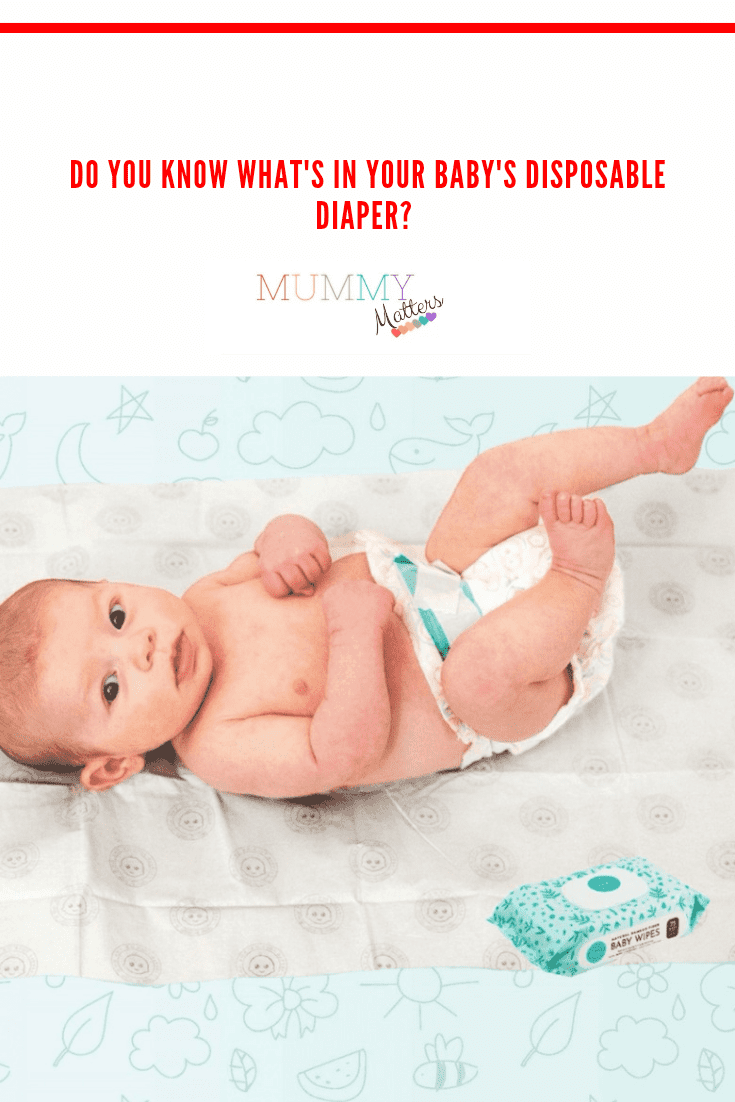Diapers are essential that a baby will need for approximately the first two years of their life. New parents will learn quickly that a baby will go through many diapers daily. Since diapers have prolonged contact with baby skin, it is very important to know what is in the diaper.
Most parents are not aware of the materials and ingredients that may be in their baby’s diaper. They either do not have the time to do the research, or the label on the brand does not include all the detailed information. So, in this post, you will learn what is used to make a disposable diaper, what to avoid and why a natural diaper has the most advantages.
Component or Material Used in Disposable Diapers
- Polyethene film – This is a disposable layer of film commonly used as the bottom sheet of the diaper. The properties of the film make it hydrophobic, and these non-woven sheets are impermeable to liquid.
- Wood Fluff Pulp – This is found in the diaper’s absorbent core, which is the innermost layer of the diaper. It aids in absorption and transfers the liquid to the SAP. This organic material generally comes from pine trees.
- Super absorbent polymer – SAP is also referred to as Super Absorbent material. It retains water inside the diaper by using less wood pulp fluff. The chemical used in SAP is sodium polyacrylate which was previously removed from tampons due to toxic shock syndrome issues. However, it is safe in diapers as it is housed in the absorbent core and does not come in contact with the baby’s skin.
- Spandex/ elastic – Most of the time, polyester foam elastics and synthetic rubber are used in disposable diapers. The elastics help keep the diaper in place, but as it sits tightly on the skin, it can cause skin irritations after prolonged use.
- Fragrances – Is fragrance toxic for babies? Perfumes and fragrances are made with a combination of several chemicals. As the ingredients used to make fragrances are kept secret, it is not advised to keep your baby in contact with foreign ingredients.
What Chemicals to Strictly Avoid in Disposable Diapers?
- Phthalates – Phthalates are used to make plastic strong and hard to break. They are related to many health conditions, including cancer, endocrine disruption, diabetes, and birth defects. It can also impact a baby’s heart and reproductive organs.
- Dioxins and Chlorine – Disposable diapers are sometimes bleached to get the white-ish outlook. Chlorine is a chemical known to secrete dioxin; this is listed as the most carcinogenic chemical. WHO has stated that exposure to dioxins might cause skin allergies and negatively impact liver function, the immune system, the endocrine system, and the reproductive system.
- Tributyl-tin – TBT is used in the core part of the diaper and acts as an antifungal sheet. As per EPA, this is an extremely harmful pollutant that takes a toll on sea life and causes endocrine troubles. Plus, in research published by the American Institute of Biological Sciences, TBT can also trigger genes that support the development of fat cells leading to obesity.
Components or Materials Used in Natural Diapers
Unlike traditional disposable diapers, the disposable natural diapers on the market today do not use such harsh chemicals. If a diaper is branded as organic, the diaper sheets are made from plant-based materials. This includes cotton, corn, and the more beneficial bamboo. Organic diapers are biodegradable and do not release harmful toxins after getting soiled or dumped.
A product must pass through certain checkpoints for it to be labelled as organic. For example, the textile in diapers needs to be approved by GOTS(Global Organic Textile Standards). To get approval, diapers must have up to 95% of organic fibres.
Most disposable diapers come with spandex or elastic made of plastic. Whereas natural baby diapers options like wool covers and prefolds are not only eco-friendly but are also gentle on the baby’s skin.
The absorbent material in the core is generally made of wood fluff pulp that is bleached using either ECF (elemental chlorine free or the preferred TCF (totally chlorine free) methods. that do not use Natural diapers do not contain any type of toxins to hamper the baby’s health. Cloth-made diapers with waterproof PUL are safer and can be used countless times.
Conclusion
There are many choices out there when it comes to disposable diapers, and they each can have e-health and financial impacts. However, the one that keeps your baby safe and is convenient to use should be your preference. Also, be aware that not all diapers are identical and that organic does not mean natural. So when looking for a diaper that contains no harsh chemicals, additives or fragrances, you want to choose a natural disposable diaper.

